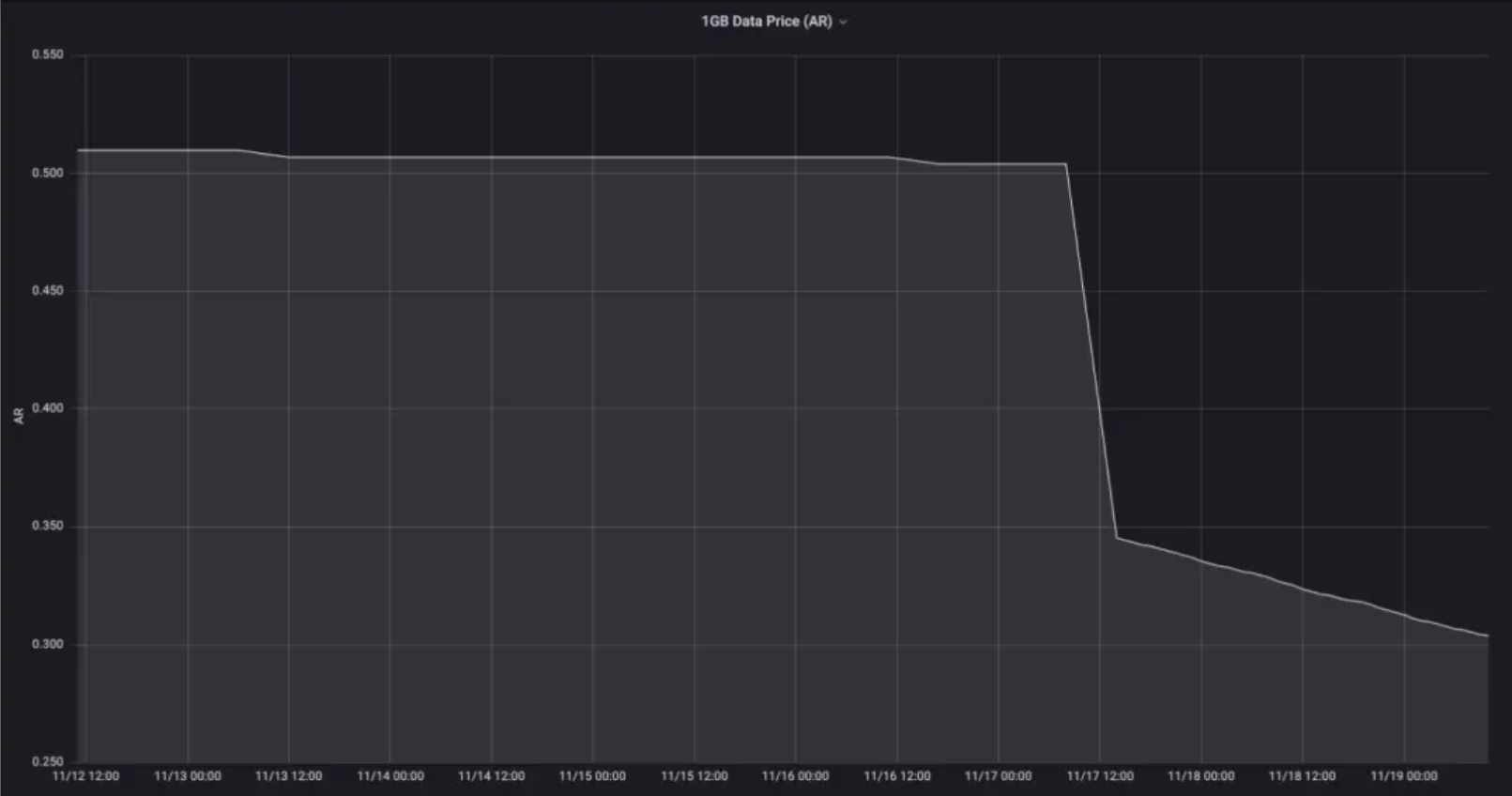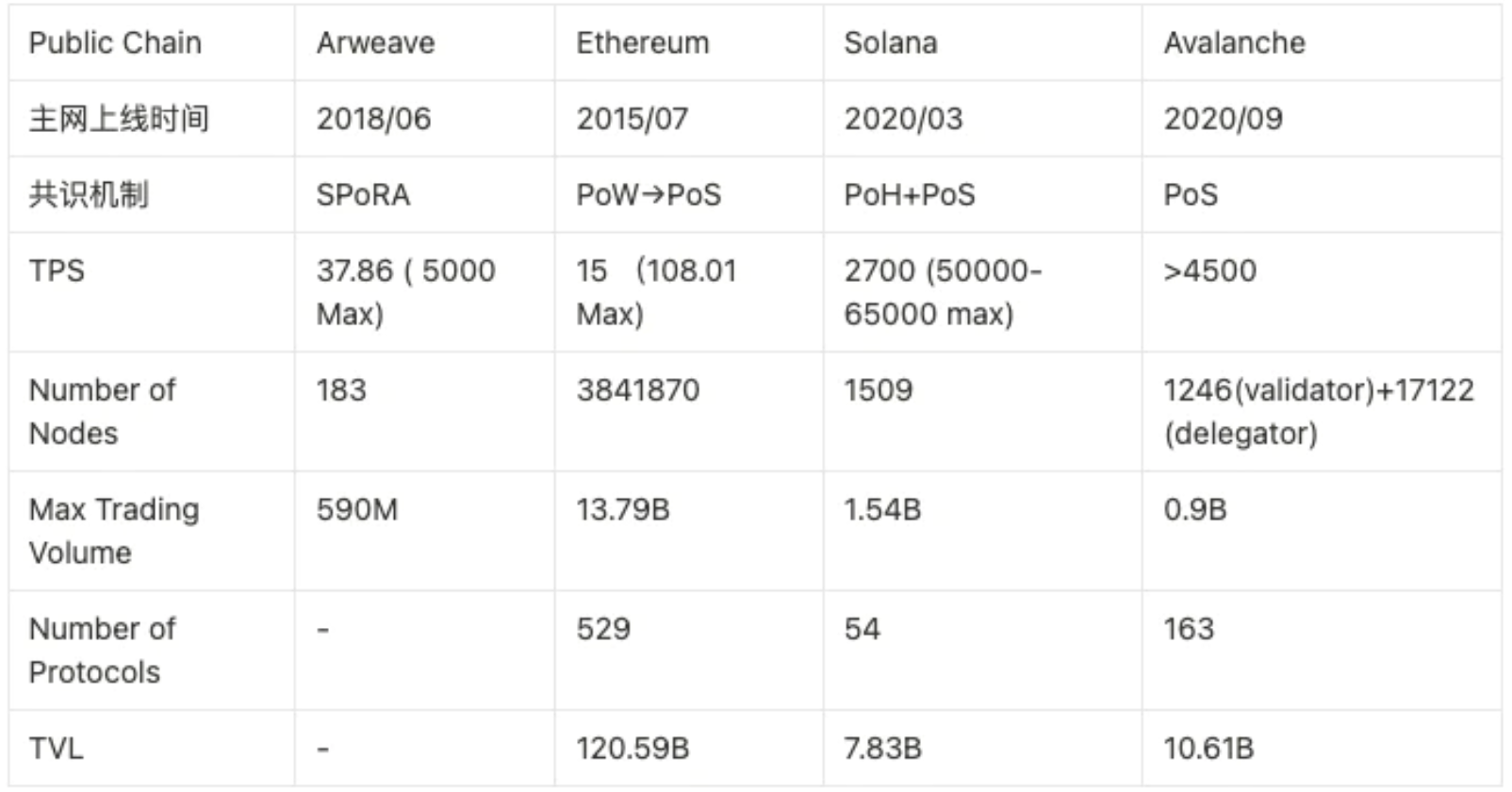How does Arweave carry the weight of the storage sector?
Arweave: the Web3.0 storage breaker
Original author:Nicole Cheng (Investment Manager of OFR), Mstone (Analyst of OFR)
Direction:JX (Partner of OFR)
At the start of the New Year, Ryan Selkis was in theMessari 2022 paper"Of the various components of the Web3 hardware stack, decentralized storage is arguably the most powerful," writes. The report acknowledges that Arweave is a key player in long-term blockchain storage, compared to the short-term services offered by IPFS and Sia.
Permanent storage
Arweave is a block network that aims to enable decentralized, permanent storage of data. Paying once for a lifetime also eliminates the tedious process of constantly subscribing. Arweave promises to provide customers with at least 200 years of storage, a goal that is becoming clearer as storage costs drop each year.
Why permanent storage?
Long before Web3.0, people had been exploring the idea that permanent storage of data was a big deal. Can users today access a 10-year-old URL or browse and download data stored on a centralized server? In the crypto world, tens of millions of dollars worth of NFT works are stored in traditional centralized servers.
The Internet, which relies on centralized storage, is fragile and fragmented, with data growing exponentially on one side and old data being lost or stolen on the other. Over the past 20 years, 98.4% of all web links have been corrupted, creating the familiar 404 Not Found. On a longer timeline, data permanence on blockchain will be a new value proposition, and the realization of permanent storage of data will be an exciting innovation in the future Internet development and Web3.0 era.
Why can Arweave be stored permanently?
Arweave useBlockWeaveData structure and SPoRA's consensus mechanism provide a new solution to the problem of permanent storage. Blockweave comes with its spinning architectureshardProperties and high scalability whileSPoRAThe consensus mechanism ensures that miners receive sufficient incentives to store rare data and achieve permanent storage of data.
So how do miners achieve permanent storage? SPoRA mechanism at the consensus level can be understood as a set of three concepts: 1. PoW 2.PoA 3. Data access speed. Arweave blocks require the participation of a random recall block, which is Proof of Access (PoA). In addition, on the basis of PoA, in order to prevent all miners from storing all the data and unable to determine the right of accounting, PoW mechanism is introduced to ensure that the miners who calculate the random number fastest have the right of accounting. However, if a large number of miners, in order to reduce costs, will uniformly choose low-cost regional operation nodes, such regional centralized storage pattern will increase the data access speed of some users. Therefore, data access speed is also a factor in determining miners' rewards.
The mechanism of PoA also hides another feature that motivates miners' intention to store -- the probability of recall block is consistent. So there is a greater chance that miners who store rare blocks will compete for rewards. This will allow all data to be stored evenly on Arweave.
Although the miners' subjective intention of storage can satisfy the permanent storage, will the objective data loss affect the implementation of permanent storage? A block that happens not to be stored by a miner is lost forever.


For example, the replication rate above is 50% and the number of nodes is 100. We can see that when the miner only stores half of the total data, the probability of losing the block is very small. However, the actual situation is that the number of nodes in Arweave network is more than 1000, and the replication rate can reach 90%. The chances of permanent loss are minimal, so to speak.
In addition, storage costs are also an important factor in maintaining Arweave's permanent storage. People have become accustomed to rising prices in almost every area of life, but data storage is one of the few areas that has bucked the trend. In the last 50 years. The cost of data storage fell by an average of more than 30.5% a year. Arweave's working assumption that permanent storage is economically viable is very conservative: Arweave assumes data storage costs will fall by just 0.5% a year. The initial cost for users to upload data to Arweave's network covers the first 200 years of storage. If the amount of data stored falls by more than 0.5% a year, it will increase the life of the data.
Arweave also has its own endowment fund -- 86 percent of the cost goes to the endowment fund when users pay for storage. Over time, the expenses in this donation will gain value, much like cash in a bank account accrues interest. Designed to provide payouts as needed to keep the incentives for storing data higher than the cost of storing it.
In the recently updated hard fork, the V2.5 hard fork has had an immediate positive impact on users of the Arweave network, where the cost of AR to store data on the persistent network has been reduced by nearly half. This fork will gradually implement HDD storage instead of SSD storage, thus reducing the initial storage cost.

source: Ardrive

Source: Wikibon, 2021
Arweave ecological
In terms of statistics alone, Arweave had a maximum transaction volume of 600M three years after its launch, whereas Solana and Avalanche had the same number of transactions in just one year.



Source: Coin Market Cap
Throughout the development history of the public chain, we can easily find that the development of the public chain is often top-down. The prosperity of the application layer will drive the construction of the underlying infrastructure, and then promote the virtuous cycle of the ecological development of the public chain. Uniswap and Opensea, as the two weight apps that burn the most ether, have added a large number of transactions and active addresses to ethereum, one after another supporting this bull market in Ethereum. DEX, led by Serum and Raydium, promoted the early development of Solana, while the rise of GameFi led the activity of BSC, while Anchor, Mirror and other distinctive Defi asset agreements brought capital and growth momentum to Terra.
Arweave, on the other hand, doesn't have a moat-level presence yet, although it has a number of great apps. Here is a list of some of the current eco-projects on Arweave by infrastructure and application:
, & have spentBundlrWhen it comes to Bundlr, we have to talk about Arweave's new technology, Bundles. Bundles add another dimension to Arweave's scalability by squeezing any amount of data through L2 into a single block that can be processed by L1. Its presence allowed Arweave to increase its trading capacity linearly. Users can therefore upload large amounts of single data without worrying that the data will not be uploaded efficiently -- it solves a problem that every blockchain has, which is that transactions submitted by others can be rejected if they reward miners more.
Bundlr handled more than 10m transactions in its first month, compared with 1m for Arweave. As Bundlr expands, the network will be able to handle multiple orders of magnitude of data. According to statistics, 70% of transactions now belong to bundled data.
, & have spentRedStoneMiddle tier: Prophecy machine solution on Arweave. RedStone, meanwhile, aims to be a Chainlink in Web3: uploading validated data to Arweave, where anyone can get the right data. At the same time, all applications built with SCP are off-chain computations. The user can read the data directly on the memory block chain when using the predictor. These data will be verified by RedStone's financial mechanism.
, & have spentKyve Network(Application layer/middle layer) : Using Arweave's storage capabilities, KYVE provides structured data storage, validation and access services for different blockchains to help them complete data storage across chains. The data uploader is responsible for obtaining data from the source and storing it in Arweave, while the verifier ensures data validity and reliability on Arweave through a series of incentive and penalty mechanisms to ensure the availability of the application layer. Once the data is stored, users can retrieve the data using KYVE's query interface or access it directly from Arweave. Through KYVE verification and Arweave permanent storage, to ensure the integrity of the supply of data to downstream users.
, & have spentArDrive: As an excellent front-end application for The Arweave network, ArDrive greatly simplifies the use of the Arweave network. Before ArDrive, users needed to interact with the Arweave network using a command-line interface (CLI) to store uploaded content. But ArDrive allows users to upload their own content at the click of a mouse.
, & have spentAR I/O: AR I/O, as a product of the same team as ArDrive, plays the role of information center. Works uploaded to Arweave via Ardrive will first pass through AR I/O and then to the Arweave network, and vice versa. The existence of AR I/O greatly improves the efficiency and experience of using ArDrive.
, & have spenteverPay(Middle tier) : Based on the on-chain payment and settlement protocol developed by Arweave, users can transfer real-time coins on Ethereum and Arweave via everPay without gas charges. EverPay is designed to provide a trusted, decentralized payment application for everyone, as well as an SDK for developers to make it easier to set up DEXs.
, & have spentPianity (Application layer) : As an NFT casting and trading platform, Pianity uses a new NFT standard built based on Arweave, which fundamentally solves the problem of storage outside the NFT metadata chain. The process of casting the NFT is to send a transaction to the NFT contract on Arweave and save the song's audio file to the chain while casting the new NFT. While enjoying low-cost on-chain storage, it also further reduces the trust cost of users in the transaction NFT process. Users no longer need to understand complex concepts such as metadata and various storage methods, so that wySIWYG is WYSIWYG is realized in the transaction process, which truly achieves the de-trust of transaction.
It is not hard to see that Arweave, as an infrastructure-level agreement, has a very different narrative, logic and value support from other public chains. Therefore, different from the top-down development of most public chains, Arweave ecology seems to have spent most of its efforts on the bottom facilities in the past three years, trying to find a new way out of its own unique bottom-up development path. Ecology has more than 400 projects so far, nearly double the number from this time last year. In the Web3.0 narrative, there will be a large number of native blockchain DApps that tend to use on-chain storage. After the underlying facilities gradually mature, there will be more application layer projects to emerge, bringing incremental users and funds into the Arweave ecosystem.
Arweave has become a leader in the field with its unique permanent storage in the storage sector. Users to achieve permanent storage of data, pay once, permanent use; At the same time, the SmartWeave contract and PermaWeb ecosystem will be progressively implemented with its own storage service. But in the future of Web3 exploration, data ownership is an important feature that needs to be more than just perpetuated, and more empowerment is needed to help Arweave tell the story.
Finally, we are looking forward to a few application scenarios for your reference:
1. NFT metadata storage, currently the most widely used use case, is bound to continue its demand growth after the rise of video NFT in the future.
2. Similar to the Kyve Network mentioned above, the data of other public chains will be backed up on Arweave, the historical data of public chains will be permanently stored, and the interface entry for easy retrieval and access will be provided as Layer 0 of public chains.
3. Web3.0 stacks and code stores such as Uniswap and Compound have hosted their front-end applications on Arweave
4. A decentralized social platform can carry a large amount of data, and Arweave is naturally highly scalable.
The original link
Welcome to join the official BlockBeats community:
Telegram Subscription Group: https://t.me/theblockbeats
Telegram Discussion Group: https://t.me/BlockBeats_App
Official Twitter Account: https://twitter.com/BlockBeatsAsia
 Forum
Forum OPRR
OPRR Finance
Finance
 Specials
Specials
 On-chain Eco
On-chain Eco
 Entry
Entry
 Podcasts
Podcasts
 Data
Data


 Summarized by AI
Summarized by AI







